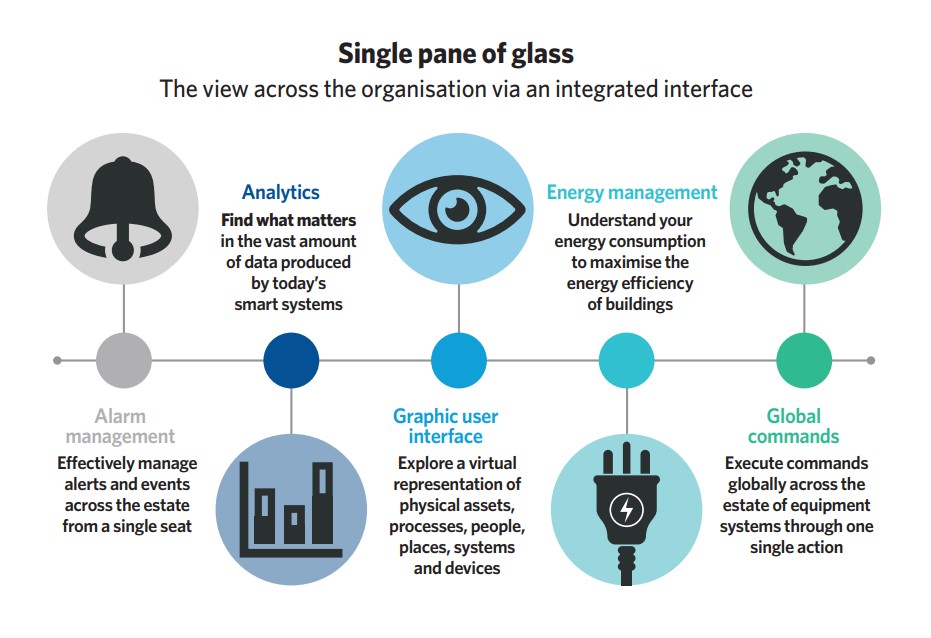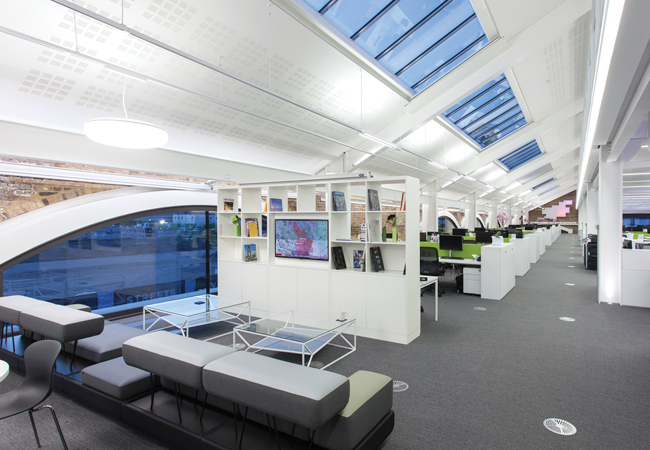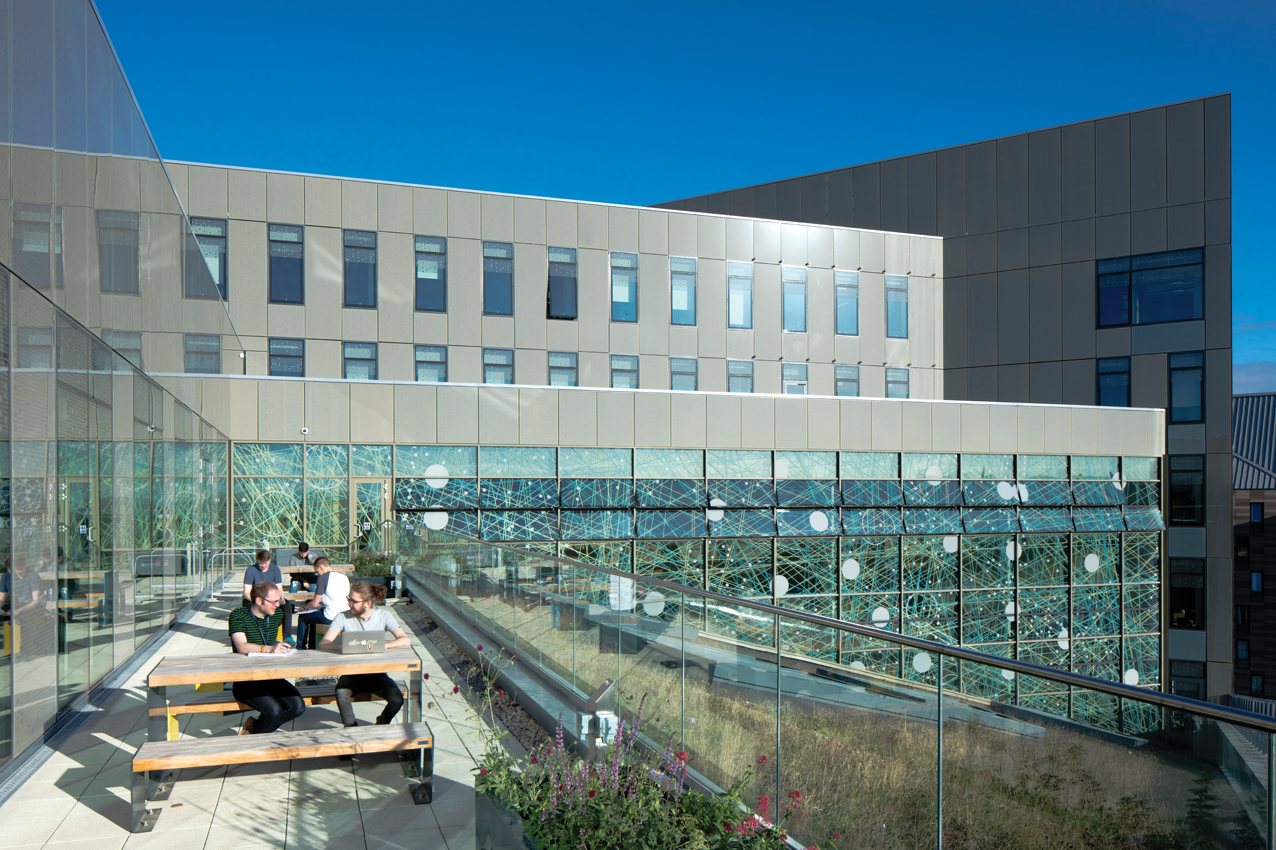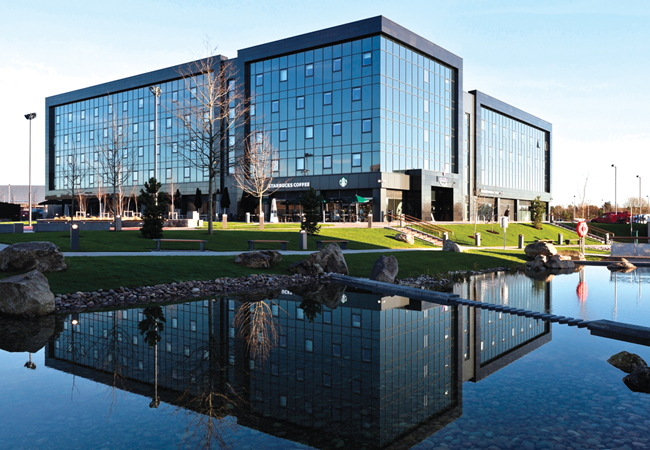
Credit: iStock
The buildings services industry must improve the integration of HVAC systems if clients are to make the most of intelligent technology and enhance building performance. That was the message from Savill’s client services director, Angelo Christou, who hosted an online CPD event – ‘How to implement smart HVAC systems’ – earlier this year. Speaking on behalf of clients, Christou said that too many intelligent systems were currently standalone and needed to be integrated to get the very best out of a building.
The event, organised by the CIBSE HVAC Group, featured presentations on intelligent HVAC systems, and talks on smart metering, networked lighting, intelligent actuators and variable speed drives, as well as the role of the master systems integrator.
The importance of integration
Nick Cooper, sales and marketing manager at Forest Rock, said integrating standalone systems would help organisations gain visibility and control through the master systems integrator. He highlighted four key considerations when integrating systems: consistent naming convention; future-proofing of buildings and assets; delivery of data analytics; and protection against cyber attacks.
Typical integrations can include life-safety systems, security, cooling, metering, lighting, building management system (BMS), and so on – but these are generally piecemeal systems that need to be pulled together into a master system and one graphical interface, known as the ‘single pane of glass’. If done correctly, Cooper said, integration can offer effective alarm management, and analytics to assist with planned and preventative maintenance and real-time problems. A graphical representation of building assets allows operators to reduce energy consumption to maximise building efficiency and implement global commands across all assets through a single action, he added.
Early client engagement with the master systems integrator (MSi) is key to understanding requirements and specific issues, said Cooper, who added that Covid-19 was leading to more focus on air quality and occupancy, and that additional sensors would help with understanding how a building was being used.
Dave Lee, associate director at Aecom, said that ‘smart building’ means different things to different people, but common requirements include security, the capture of ‘normalised’ data, and the use of integrated platforms with one single pane of glass.
It is vital that the client FM team is trained for the continued operation of associated systems, to ensure that smart systems are not disabled once the project team has left
He believes the main stakeholders of smart buildings can be broken down into three groups: users, who are looking for a better place to work; building operators, who are looking for ways to improve building efficiency; and building owners, who are looking to reduce costs while maximising returns.
According to Lee, the key to smart building design specification is to understand clients’ requirements and ensure a comprehensive specification, which includes details such as MSi clauses, semantic modelling (tagging), and an analytics or artificial intelligence clause.
Once a specification is outlined, he said, the smart building consultant is able to offer contractor coordination/reviews at the tender stage, and then monitor and witness progress and completion of the smart systems on site. This is to ensure that the design and client’s needs are met, and that material and workmanship standards are adhered to.
It is vital that the client facilities management (FM) team is trained for the continued operation of associated systems, to ensure that smart systems are not disabled once the project team has left, added Lee.

Enlightening lighting
Technical systems representatives – Jess Costanzo, from Simmtronic Lighting Controls, Greg Tracy and Stuart Bratton, from Danfoss, and Nick Wood, from Optimised Group – presented on their firms’ smart technologies.
Costanzo started by advising that the key to lighting control was how the system was networked to allow it to operate interactively with other devices within the building. One way to create this network in commercial buildings is with an area controller or router, to manage the lighting control modules connected to the light fittings, and an addressable lighting controller (for example DALI). This will give digital feedback from the lighting system to assist with facility management. Examples given of the feedback data included device access, emergency fault testing, live occupancy data, light levels, lamp faults and event history. Lighting control has a big part to play in enabling smart buildings and integration, because it typically reaches all areas in the building, so data can be provided for other services.
For example, Costanzo explained how presence sensors installed around a building can be used to save energy because the data is collected in real time, and can be used to ramp down HVAC plant in unoccupied areas. An open protocol is key. It enables the lighting system to integrate with other systems on the same building backbone – for example, BMS, energy management system and HVAC.
Tracy, commercial building sales manager at Danfoss, introduced an intelligent actuator for pressure independent control valves (PICV), which is a four-way building communicator – an actuator, energy monitor, bus communication device, and data portal.
The intelligent actuator can be installed in a variety of locations where 2-port valves are used – for example, air handling units, fan coil units, chillers, and chilled beams – to balance the whole system and maximise energy efficiency.
According to Tracy, the intelligent actuator offers a more efficient installation methodology because it can be controlled via the BMS even after the ceilings have been closed, allowing remote flow setting, flushing, de-airing and failure detection. The device has a number of remote input/output (I/O) signals, which means the number of room controllers can be reduced. When combined with a junction box and the BMS, a variety of sensors – such as those for room temperature, dew-point temperature and windows – can be controlled. A key feature of the intelligent actuator is its ability to monitor energy through the optional temperature sensors and flow measurement to the terminal units, the ongoing monitoring and optimisation of plant, and continuous commissioning.
Intelligent variable speed drives
Danfoss application manager Bratton said intelligent variable speed drives could offer more energy savings than standard variable speed drives. By using the I/O signals from an intelligent drive, the number of outputs to the BMS can be greatly reduced, he added, potentially offering lower costs and requiring fewer components – which could, in turn, offer greater reliability.
To get the best from an intelligent drive, it needs to be supported by a fieldbus, Bratton said, and – in doing this – the BMS points can be removed. Drives are programmable and can perform analytics of the drive/motor operation for predictive condition-based maintenance.
Smarter metering
Wood, technology director at Optimised Group, talked about using smart metering to help clients get the most out of their buildings. Metering is required for compliance, recharging, accountability of occupiers and benchmarking. It enables visibility and accountability in multi-use buildings, and, if deployed and managed correctly, helps eliminate energy waste, which will drive long-term asset value, he said.
There are tools for energy management, Wood added, and by combining utility recharging with energy analytics, the landlord can gain useful information, including expected energy loads against actual loads, monthly cost per room occupied and total monthly operating costs.
The final item Wood covered was recharging methodologies and how to minimise service charge through HVAC metering. These included: ensuring that the building had a focused metering strategy, including plant associated with heating, cooling and electrical power; having a real-time, reliable data feed and dynamic apportionment, as well as occupier engagement; and ensuring that the methodology is backed up by a lease agreement to ensure enforcement.
Closing the intelligence loop
Christou concluded the event by saying that, as a client, he would be looking to make his buildings smarter. He called on the industry to create a system that gathers data, reviews it, takes action from it and, ultimately, learns and evolves – thereby closing the loop and creating a truly smart building.
About the author
Mary-Ann Clarke MCIBSE is regional director of building engineering at Aecom , and chair of the CIBSE HVAC group




